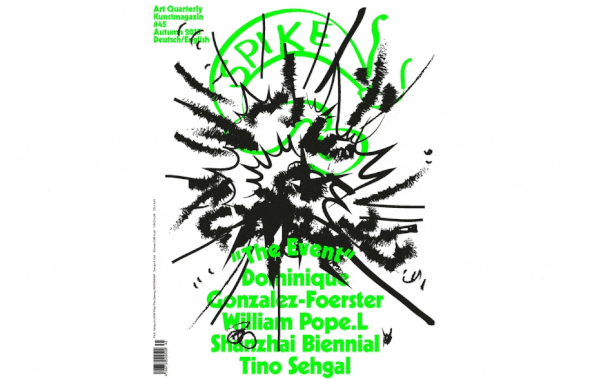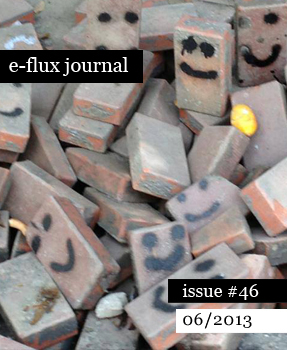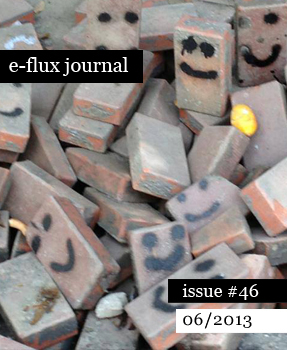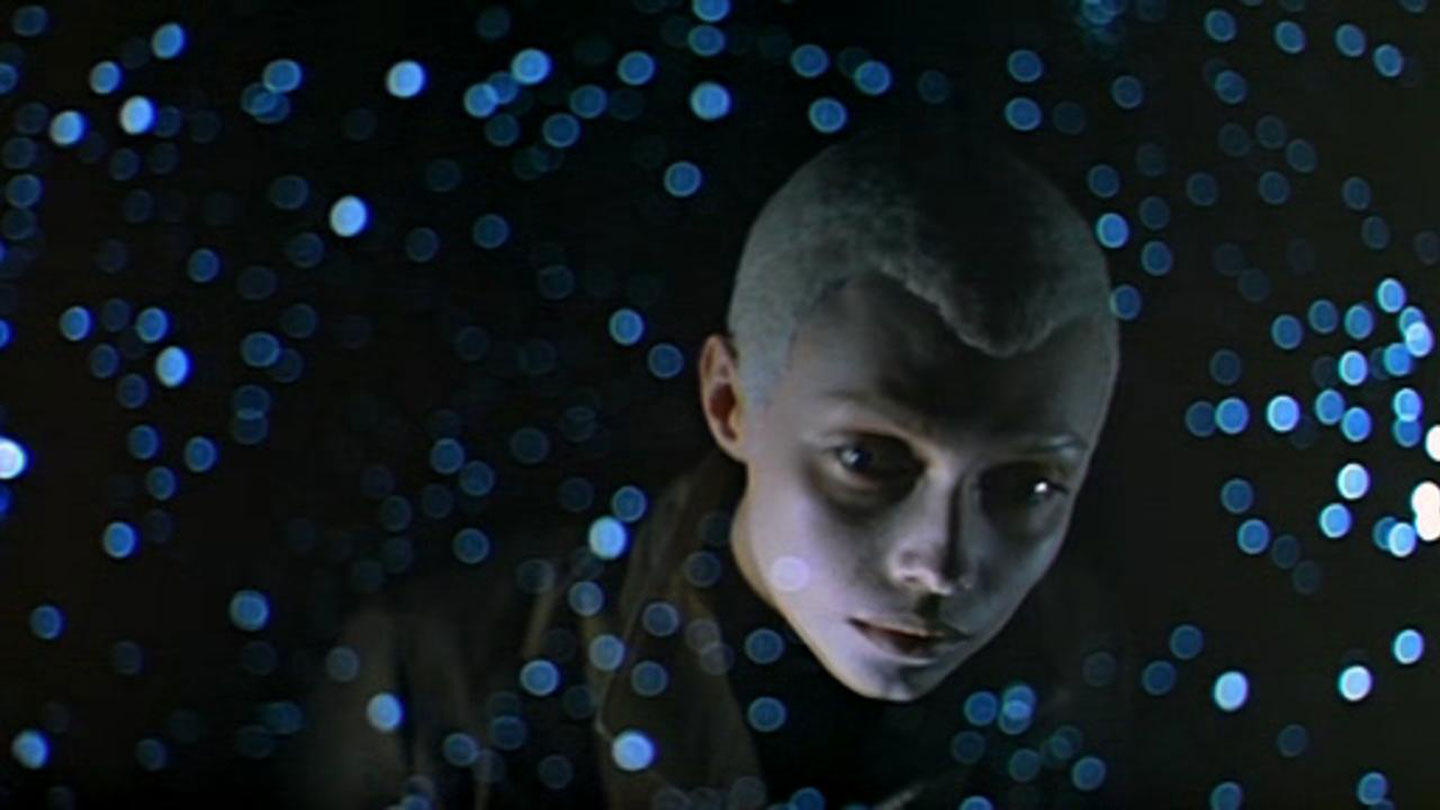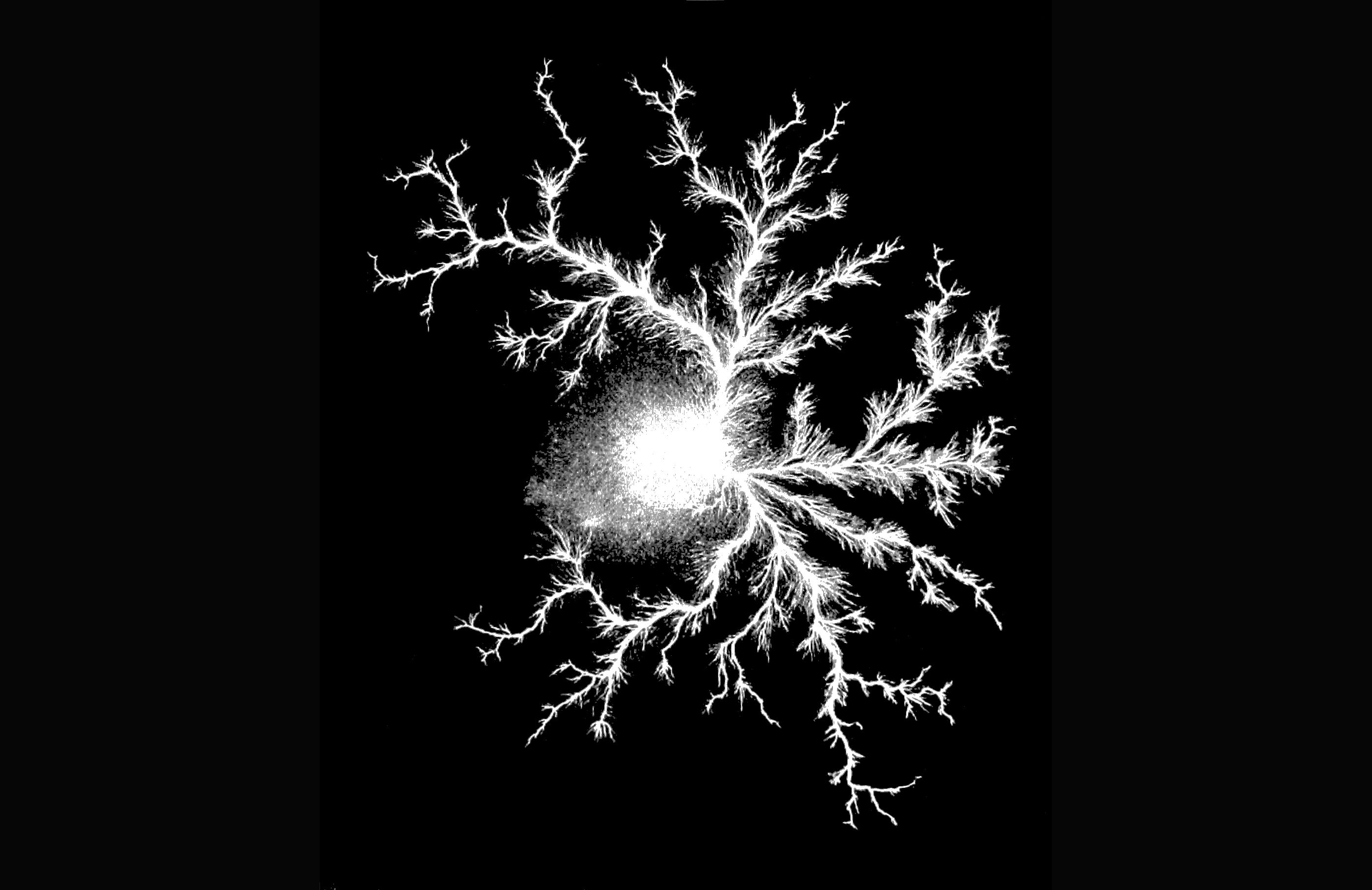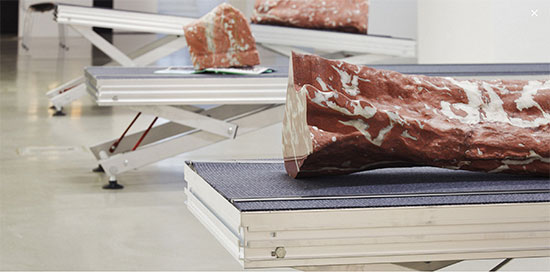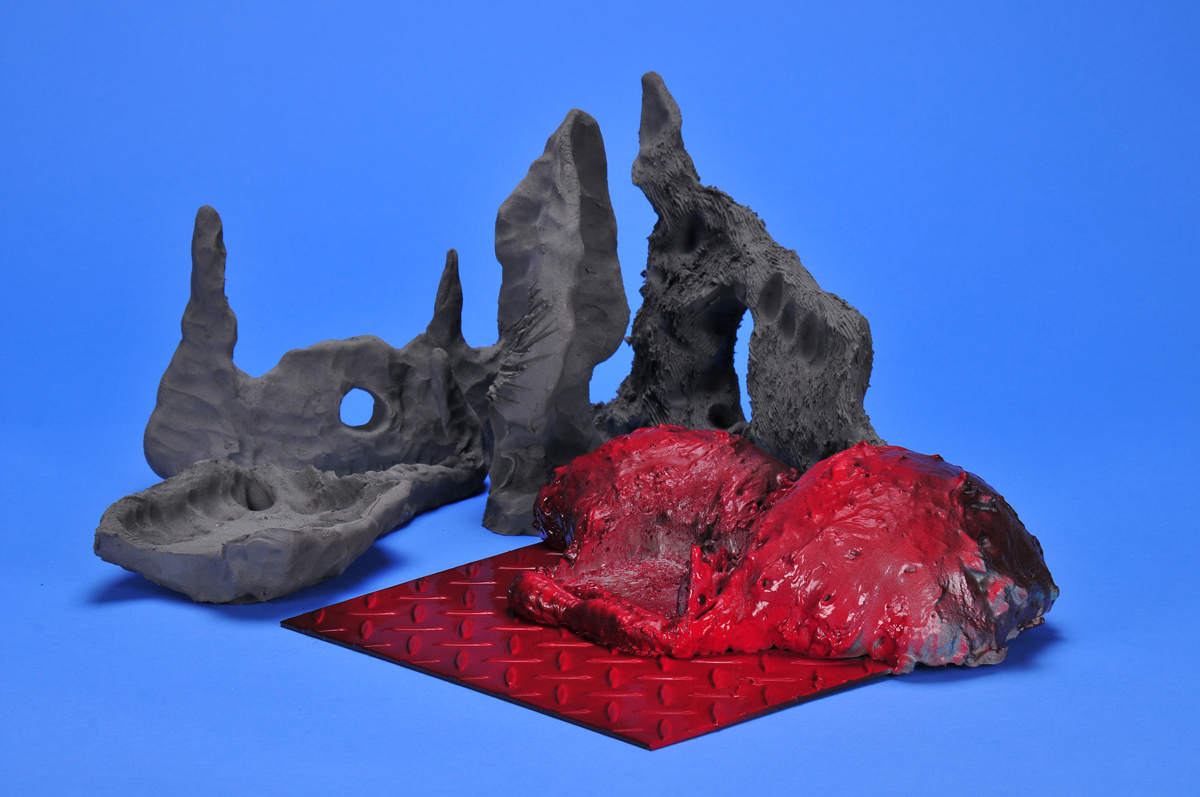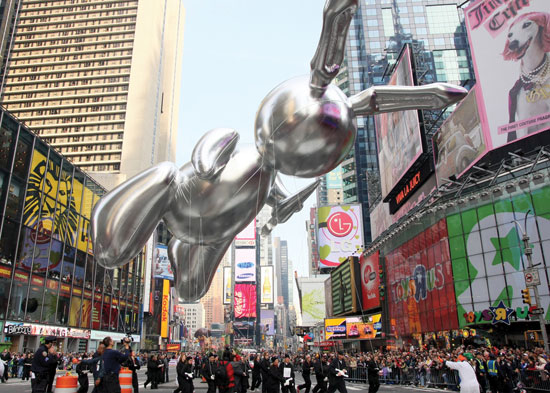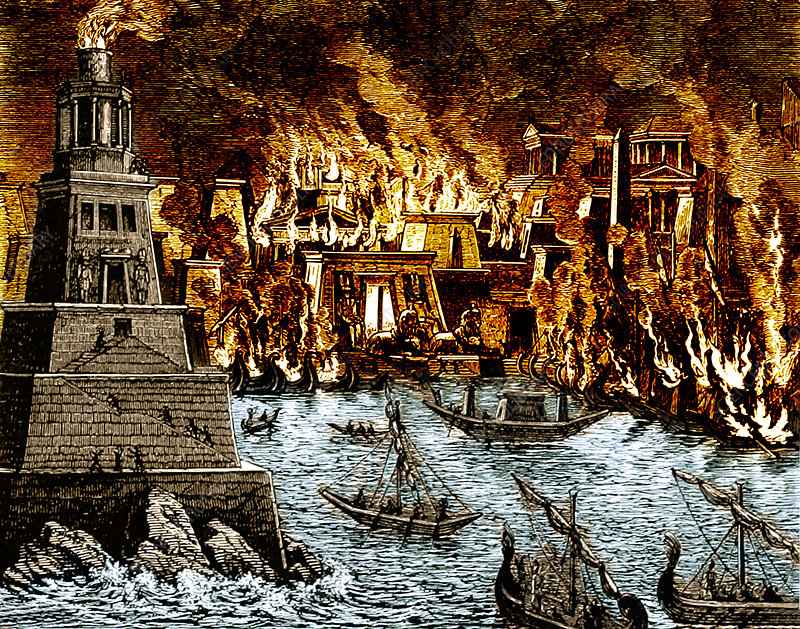
Burning of the Royal Library of Alexandria. Engraving from John Westrop Watkins, Popular History of Egypt, 1886.
In the last few years I have begun catastrophizing. My actions (and inactions) are haunted by premonitions of disaster. In fact, it is more like a sense of being seized by fear—grabbed and held by it, somehow inside the body, although also with a feeling of hollowness, as I leap from contemplating an action, or inaction, to its terrible consequences. Something as trivial as reaching for a bottle from a high shelf or completing an article becomes fraught with inchoate terror, despite a conscious awareness that the consequences of catastrophe, in these cases, are slight. Life, or the imagination of life, is a bit like living in a Final Destination movie—which I haven’t been able to watch again until recently (perhaps being able to watch them again is a sign of recovery?). Chains of causation move inexorably towards disaster.
This catastrophizing has not emerged out of nothing. It has not fallen from the sky. The reasons for its emergence, at least the reasons I am aware of, are not important to recount here. Suffice to say, they amount to the usual mix of personal and public events that have left many in more distress than me.
One thing I have noticed about catastrophizing is that it makes you aware of how reality comes to meet you in its catastrophic dimensions. The catastrophizing thoughts quickly seize on what reality offers. If you start to feel your catastrophizing is under control, reality soon starts to scream at you about some imminent catastrophe. On the July 18, 2022 the UK government declared a red-level weather warning for heat, which will no doubt be the first of many. For any reader of Kim Stanley Robinson’s The Ministry for the Future (2020), as I am, this would be enough. Not much later the short-lived premiership of Liz Truss ended rapidly after she attempted to crash the fiscal basis of the UK state. These are parochial references, sure enough, but there are more than enough global events or local equivalents to maintain the air of catastrophe.
Catastrophe also haunts the theoretical imagination. It even haunts what might seem furthest from catastrophe, which is the utopian imagination. Utopias emerge in response to crisis and catastrophe, figured in the postapocalyptic imagination, as well as functioning to stem catastrophe. Thomas More’s Utopia (1516) is, in part, a response to the world of enclosures in which sheep have “turned into man-eaters,” leaving the masses in poverty.1 Utopias also, as I will suggest, carry the trace of catastrophe within them, not least the catastrophes they try to ward off. Utopias are also marked by the tendency to inhabit the inversion to dystopia, to the point that these forms become blurred. What then of the recent prehistory of our theoretical present? Here we have seen the emergence and eclipse of what I have called the “utopias of the text.”2 These were the visions, associated in particular with the theoretical moment known as post-structuralism, in which the text emerged as the counter to the limits of any particular text. They had their heyday in the moment of the 1970s, especially in the wake of May ’68. The text now overflowed all containment and dispersed itself beyond the author, reader, or any other limit. It was an uncontained utopia.
Today, we are told that such utopias were fatally limited. They collapsed reality into the text and created the text as a new prison house. These utopias of textual proliferation capsized into nightmarish visions of confinement, as in the textual utopia of Sade’s Castle of Silling, from The 120 Days of Sodom (1785).3 A world of signs and constant textual production is also a site of terror and suffering, as Pasolini’s Salò (1975) demonstrated by revealing Sade’s machine as equivalent to the biopolitics of fascism. The difficulty of stabilizing Sade’s text between these readings suggests the instability of the utopias of the text. In response, we have seen the emerging demand for utopias of hybridity, especially those of hybrid things, which will at once put us in touch with the real world, stabilize a new utopia, and also incarnate a material resistance to any final form. We have witnessed the turns to the speculative, to new materialism, to the digital, to the posthuman, and so to the end of all the utopias of the text. Modernity, if we accept the suggestion of the late Bruno Latour, has wrecked its own claims to be modern on the hybrids that it produces.4 We have never been modern and, it now turns out, we should never have been textual either. Escaping the “the narcissistic reflex of human language and thought,” which is seen an unable to deal with matter, we need to reveal a new world of flows and things as a world of material hybridity.5 (We could also note in this story of the triumph of the hybrid the common occlusion of postcolonial notions of the hybrid, which itself deserves serious consideration.6)
The utopias of the text were, however, already haunted by a sense of catastrophe, as I have suggested, and this catastrophe persists in the triumphalism and the joyous tone of the new material utopias of hybridity. Our new gay science of hybrid materiality is perhaps something of a manic defense against catastrophe. An attention to materiality is obvious and obviously necessary in the contemporary context of the material damage we have inflicted on the earth, which Jonathan Crary has called our “scorched earth.”7 Also, hybridity seems a still powerful slogan at a moment of resurgent fascisms and reactionary purifications.8 The difficulty I want to indicate is that such a shift is not as momentous as is often claimed and not a radical solution to the catastrophes befalling the utopias of the text. The utopias of hybridity, which claim to give us the world of materiality, actually retreat into a contemplation of the complexity of hybrids beyond control. Demoting the power of humans, they risk ratifying the world as that “pile of debris” that “grows skyward,” confronting Benjamin’s angel of history.9 The exit door leads in.
Catastrophe at the Origin
What if the catastrophe had already happened? Daniel Heller-Roazen offers a commentary on the Library of Alexandria as an institution “in which the conservation and the destruction of tradition can hardly be told apart, an archive that, in a vertiginous movement of self-abolition, threatens to coincide entirely with its own destruction.” After reconstructing, through Classical sources, the form and nature of the Library, Heller-Roazen comes to the fire which destroyed it, noting that “the tale of final destruction is difficult to establish with any certainty.”10
The story is that Caesar, involved in the struggles in Egypt in 47 and 48 CE, set fire to enemy ships in Alexandria. The fire, however, spread beyond the docks, consuming the library. The number of books destroyed ranges from forty thousand to four hundred thousand, depending on the source. As Heller-Roazen notes, there are many ambiguities in the story, from the fact that some sources do not mention such a momentous event at all, to the possibility that what is being discussed is the destruction of storehouses and not the library itself.
Heller-Roazen makes a further speculation: “One might be tempted to suggest that, had there not been a fire to consume the Library, one would have had to be invented: What fate, after all, could await the universal archive other than its destruction?”11 The paradox, also previously pointed out by Jacques Derrida,12 is that the very gathering together that constitutes the archive exposes its contents to a radical destruction without reserve. The story of the burning of the Library of Alexandria would be the image of a catastrophe that had to happen, as a condition of the archive, even if it did not happen in empirical reality. It also suggests a material catastrophe even as the equivocal record of that catastrophe is reconstructed in textual traces. There is something left after the Library of Alexandria has burned and that is ashes if, of course, it burned at all. If not, what destroyed the Library still destroyed it, even if that was only the wearing work of time itself.
The origin is a point of catastrophe. This library, as utopia of the text, as the gathering of human knowledge, is the site of potential catastrophe. In a very strange text or fragment called “The Ice-Age of Catastrophes” (1915), the great Hungarian psychoanalyst Sándor Ferenczi proposes that all psychic catastrophes—and what is the psyche if not another library or archive of catastrophes (or their avoidance)?—are the result of a catastrophe that has already happened.13 Writing during the First World War, which he describes as a kind of laboratory experiment raised to a “cosmic level,” Ferenczi ponders the ways in which war offers a revelation of the deepest layers of the psyche. War is an exercise in mass social regression and, for Ferenczi, it reveals the shaping catastrophes that have structured human history. In particular, war reveals the “imprint” of the catastrophe of the Ice Age.
In the 1870s, science confirmed the existence of ice ages, and Ferenczi is referring to the last ice age, which was between 115,000 and 11,000 years ago. For Ferenczi, in response to this climate catastrophe, humanity formed intimate familial and social bonds to survive. Our development as a species is mirrored in our individual development, as Ferenczi was a believer in phylogenetic recapitulation (the development of the individual repeats the development of the species). So, the Ice Age left not only an imprint in the history of humanity, but one repeated in the development of the individual human. While that is not true, what Ferenczi does suggest is something interesting: what we fear in the catastrophe is that the catastrophe has already happened.14 The textual utopias are haunted by their own original catastrophes, to be consumed in fire or covered in ice, and, perhaps, their own future catastrophes, as they give way in the face of materiality.15
Blotting out the World
Jorge Luis Borges would seem to firmly belong to the age of the utopias of the text. Borges is regularly cited by the thinkers of post-structuralism for his sense of the text coming to replace the world as we know it by a new textual world of the signifier. Derrida uses citations from Borges in his discussion of the disseminative power of the text,16 while Foucault has him as the inheritor of Flaubert and herald of a world in which books are the true subject of the literary work. This is a world where “the library is on fire.”17 In a more equivocal fashion, truer to Borges’s anxieties, Baudrillard uses Borges’s parable of the map that comes to match and replace the territory as the allegory of simulation replacing reality.18 Borges’s imaginary world of Tlön, in which “metaphysics is a branch of fantastic literature,” would seem to be the world of post-structuralism and its utopias of the text.19
These fleeting citations create an image of Borges as one of the writers of the utopias of the text, but any reader of Borges might be a little puzzled. While we certainly have the notion of the text overwriting reality in Borges’s fictions, this overwriting is often disturbing and dangerous. To return to the world of Tlön, in the story “Tlön, Uqbar, Orbis Tertius,” this is a world which “is on the point of blotting out the known world,” as W. G. Sebald has it in his retelling of the story in his Rings of Saturn.20 This is text as threat or text as catastrophe, as it overwrites our own reality.
The attraction of Tlön lies, in part, in the fact it is an “orderly planet” and, the narrator states, “ten years ago [1937] any symmetry with a semblance of order—dialectical materialism, anti-Semitism, Nazism—was sufficient to entrance the minds of men.” In Borges’s pessimistic conservatism, reflected by the narrator, the threat is one of an excess of order over the flux and flow of human affairs. The ambivalence of the story is dizzying. While the world of Tlön, with its absence of causal chains, a world without plagiarism, a world in which “works of fiction contain a single plot, with all its imaginable permutations,” might seem to be the world of Borges’s fiction (and textual utopias), it is also the world invading and destroying our world in the name of order. The narrator resists this invasion, closing the story by making “an uncertain Quevedian translation (which I do not intend to publish) of Browne’s Urn Burial.”21 Instead of the ecstatic immersion in the text, we have resistance to the invasive text carried out by means of the text, as a kind of prophylactic.
In recognizing the power of the text to overwrite reality, the best we can do is recognize that this writing is only ever a kind of fiction that remains transient. What Borges provides is not simply a testament to the power of the text, but also a warning against being seduced by that power.22 Borges’s fictions, as explicit fictions, aim to resist those fictions that pass themselves off as true or real. The cost is that we are left in a world in which nothing is true or real and there are only ever competing fictions. As J. G. Ballard put it, in his 1974 preface to the French edition of Crash, “We live in a world ruled by fictions of every kind,” and in this context the role of the writer “is to invent reality.”23 The problem is that to invent reality is to invent another text, another fiction.
This turn towards dystopia is also a material turn. Tlön is not only a textual world, but also a world of objects, of the hrönir, which are duplicates of lost objects. In a world of absolute idealism, to imagine an object is to make it real. Also, the invasion of Tlön into our world is not only a textual invasion, begun by the encyclopedia of Tlön, but also one of material objects. Objects from Tlön start to intrude into our reality: a strange compass, then a cone of bright metal of intolerable weight. We are not only invaded by the signifier, but by the material by-products of those signifiers.
This materiality, produced as it is by the text, which is true to Tlön’s absolute idealism, continues in Borges’s “The Library of Babel,” in which the Universe becomes a library.24 Borges’s narrator is not only attentive to the content of the texts, which are often fragmented and senseless, but also the material architecture of this space, which is detailed to a similar degree as Bentham’s Panopticon (which it starts to resemble).25 This utopia is material, as all utopias are, even as they are creations that often only exist on the page. It is also dystopian, in that this library universe is not one of the play of the signifier but of a series of senseless inscriptions in which we wander. The narrator of this story speculates that “I suspect the human species—the unique species—is about to be extinguished, but the library will endure: illuminated, solitary, infinite, perfectly motionless, equipped with precious volumes, useless, incorruptible, secret.” Perhaps the final dystopia is the unread library, which is foreshadowed in the narrator’s opening early statement that “my eyes can hardly decipher what I write,” and tragically invokes Borges’s own encroaching blindness.26
All this is to say that the utopias of the text are haunted by the inversion to dystopia and by the possibility of the utopia of hybridity. This is also to say that today we are not so far from the utopias of the text as we imagine. Already, the dominance of the text was a dominance in relation to materiality. Derrida’s emphasis on the trace as also material, even if it is a matter of negativity, of furrowing or disrupting, and includes tracks, scents, and so on, is one sign of this. In his book Cinders, now included within a series devoted to the “posthumanities” and positioned as biopolitical by the series editor Cary Wolfe, Derrida argues the cinder is “the best paradigm for the trace” as “what remains without remaining from the holocaust, from the all-burning, from the incineration, the incense.”27 This is, of course, a materiality on the verge of disappearing, a trace of materiality, and hence unsatisfying to the demands of the new utopias of hybrid matter as substance. And yet, this still haunts those utopias with the insubstantiality of their own invocations of matter and the strange line, the trace itself, which connects and divides sign and matter.
Derrida writes that “the urn of language is so fragile,” and so we have another echo of the Hydriotaphia, or Urne-Burriall (1658) of Sir Thomas Browne, which echoes in Borges and Sebald.28 Browne’s narrative is of the fate of human remains: “But who knows the fate of his bones, or how often he is to be buried? who hath the Oracle of his ashes, or whether they are to be scattered?”29 The fragile urn of language contains cinders, the ashes of human transience. Derrida comes close to Borges, probably inadvertently, approaching Borges’s singular resistance to the text, which is a political singularity. This political singularity is one of a conservatism that relies on the disruption of order and the fragmentation of any utopian impulse. For Borges, what remains is a transience that can never be encompassed by order. Borges’s textual utopias are so strange because they are not utopias at all. Despite this difficulty, which is not often noted in the image of Borges as the speculative writer par excellence, we can trace in his writing that crisis and inversion of the utopias of the text. Borges already predicts not just the utopias of the text but the future utopias of hybridity, and the strange mingling of both.
Debris Poetry
The utopias of hybridity are not some magical resolution to the catastrophes that threaten the utopias of text. If anything, they are the intensifications and exacerbations of these catastrophes. How do the utopias of hybridity deal with language? They do not eliminate it, in the style of William Burroughs’s desire to “rub out the word forever,”30 or Mesmer’s attempt “to think without words,” which, as Hegel reports, was “a manifestly irrational procedure which, as Mesmer himself admitted, almost drove him insane.”31 Instead, language is reduced to being one hybrid object among others. Language is not something that masters the whole, providing its image or allegory, but, instead, is treated as just another object. We might note the effect of the proliferation of programming languages, especially object-oriented languages, as a possible influence on this downgrading of language.
Words must be fluid and mobile. They must appear as hybrids that can name objects but never fix them. Language is not so much the medium for objects, but merely the necessary evil of naming that should aim to proliferate objects. This is why, as Ian Bogost pointed out, we have the “Latour litany,” which itself can become a programmed object.32 Language is an act of listing in a utopia of hybrid things which can never come to an end. Borges’s Library of Babel was “unlimited and cyclical”;33 the utopias of things are unlimited chains (or perhaps better flows, as chains might be too weighty and invoke the chain of the signifier …). This is a negative theology of materiality, in which matter replaces god as the unknown that language can never name but only indicate. Unlike in Arthur C. Clarke’s short story, we can never exhaust the “Nine Billion Names of God” (1954), by means of computers or otherwise, because there are an infinity of hybrids.
We can find language as an object, as an object that is used to name objects, in the famous scene from Jane Bennett’s Vibrant Matter (2009) of things found “On a sunny Tuesday morning on 4 June in the grate over the storm drain to the Chesapeake Bay in front of Sam’s Bagels on Cold Spring Lane in Baltimore.” We can note the parodic sense of realism of moment and setting, as well as the echo of the title of a poem (like Stevens’s “The Idea of Order at Key West”). This is a scene of debris. What is found is:
one large men’s black plastic work glove
one dense mat of oak pollen
one unblemished dead rat
one white plastic bottle cap
one smooth stick of wood
Glove. pollen. rat. cap. stick.34
Now, in form and mode, we have the enjambment of modern or modernist poetry, as each object is given its own line. Perhaps fortunately not Eliot’s “rats underneath the piles,” considering what Eliot next anti-Semitically invokes, but certainly not far from his “These fragments I have shored against my ruins.”35
Bennett has produced her own litany, in which the role of language is at first descriptive, but then further reduced to the bare naming of objects. Language itself is reduced from description to bare names and by this gesture we are supposed to accede to the transparency of a sign that is merged with both signifier and referent. We are far from the difficulty of reading objects that was the desire of modernity, in which both Marx and Freud found the image of the object in the hieroglyph.36 The objects of the world are to be deciphered. For the utopias of hybridity this is much too reductive, so in turn language must be reduced to the status of object, to naming, or even to gesture (although, with Wittgenstein, we might recall that the gesture of pointing has to make sense within a kind of language). The reduction of language is to serve the proliferation of the hybrid as a fundamentally indecipherable sign, or as a sign that is an object that we can infinitely decipher.
This is a textual poetics in denial of being a text,37 which tries to render the text as oddly transparent to the world of things. In this moment of listing we find the attempt at what Donna Haraway calls “the corporeal join of the material and the semiotic.”38 In this moment language has to dissolve itself into the materiality it invokes, and so we find the dissolution of the utopias of the text into the utopias of hybridity. At the same time, however, an inversion threatens, in which objects become fused with signs and so return to language. Suddenly, the utopias of hybridity start to look like utopias of the text. While proclaiming its access to objects as they are, what we instead find are another set of textual objects, but this time of sign-objects as varying degrees of transparent windows onto the world. Materiality remains as remnant and residue, and the hybrid objects start to appear as retreating cinders that remain after the world has burned.
This moment of the corporeal join is one linked by Haraway to the sacrament: “There’s the material semiotics of Catholicism, which is the word-made-flesh part.”39 This fusion of text and matter is the desire of the new materialisms, at least particularly those of Haraway and Bruno Latour,40 for whom, as “for much Catholic theology, both official and popular, incarnation is a centrally compelling and highly charged mystery.”41 Such a fusion of the sign with matter recalls the modernist desire to connect sign and thing, in Eliot’s Anglo-Catholicism or in the thinking of David Jones, the modernist painter and poet and Catholic convert who saw making signs as affirming “the validity of material things.”42 Not only do we have a sudden capsizing of the utopias of hybridity into the utopias of the text; we also have a return of the religious impulse of sacralization. Things are to be protected from words by a fusion that is only ever renewed forever to fail again. Hybrid things are temporary sacred signs, resistant to any decipherment, and so to any knowledge, instead to be contemplated in the moment of mystery.
The religious moment intrudes into various of these forms of materialism precisely as the moment of fusion between sign and matter. Deleuze, the real origin figure for these new materialisms, would invoke the necessity for cinema to restore our belief in the world, to mend our broken relation to the world.43 While seeming to put all its faith into materiality, we might note this faith is remarkably fragile, seemingly needing to be constantly bolstered. If language is a broken and inadequate mediation—Deleuze prefers the mediation of images, especially the time-image—then this new mediation is one that is only ever an act of faith. For all the desire to turn to reality, when reality appears it as a mysterious text that can never be deciphered, a kind of hieroglyphics without the Rosetta stone (the crucial part of the metaphor for Marx and Freud). All we can do is contemplate and fuse with this reality of hybrid objects or, as Ballard suggested, invent this reality. That is the utopian moment. In that moment, hybridity, ironically, disappears, into the repetitive relation to the fusion of sign and matter. What we find is the same thing (or hybrid) over and over again.
While we might appear to have a thinking of the relation between language and matter, instead I want to suggest we rather have the absorption of language into matter and the collapse of determination and relations. If the utopias of the text made language indeterminate, into the flowing text, now the utopias of hybridity make objects indeterminate, into hybrids, that coalesce and reform in litanies and chaotic arrangements.44 The qualities that humanism gave to humans—free will, self-determination, passions, agency, actions, etc.—are now neatly transferred to objects. Of course, all this might seem to enrich our world, and who could complain about that? Chaotic materiality would seem to resist forces of abstraction and capture that limit reality to what produces value.45
The difficulty is that the utopia of hybridity does not lead to materiality as such, but to the litany world of a series of objects only ever in contingent relations. Historical determinations vanish or are left opaque in a mode of religious contemplation. Objects align themselves in temporary sets and the transformations or relations of those sets is left unclear. While we are called to appreciate the fine grain and detail of the gaze of the materialist, that detail becomes a mushy series of equivalent hybrid objects. Hybridity turns to ashes. What we might gain in belief in the world we lose in actual relation to that world, including to its material transformation. This is the catastrophe of the utopias of hybridity, which leave us contemplating things, marveling at their complexity and difference, with no way to understand them or to control them. In the end we are left with matters of faith. If we wandered once in the library, now we wander in the hall of hybrid things.
In the end, has catastrophizing overwhelmed us? Fascinated by the fires that consume the texts, have we, in turn, become simply recorders of catastrophe? Joshua Clover asks the question: “Once fire is the form of the spectacle the problem / becomes how to set fire to fire.”46 Isn’t this, though, only another turn in the circle of catastrophe in which we are burning? Now we can only intensify the burning, destroy the spectacle of destruction, and so simply become adjuncts of catastrophe.
The utopias of hybridity promise a way out of the library and out of such dilemmas. We no longer circle in texts or in fire, if these two are different things. We step out of the circle and into the world. But that world is only sustained by a fragile faith. Our confident step hesitates as it becomes haunted by potential catastrophe when we touch that world. Relation itself takes on the form of catastrophe. Instead, we need to think relations of knowledge and expropriation that make it possible to transform the world and avert catastrophe. Not all relations are equivalent catastrophes. That is the catastrophizing mode, in which we live in a state of paralysis or trembling, fearing that what we touch might fall apart. The world is not a spectacle of fire or of joy, or not only these things. Without recovering such relations, we end up reducing ourselves to recording devices, to mute witnesses to catastrophe, abdicating both responsibility and possibility.
Utopia, trans. Paul Turner (Penguin, 1965), 46.
“Utopias of the Text: Prefigurations of the Post-Literary,” Countertext 5, no. 1 (May 2019).
See Roland Barthes, Sade/Fourier/Loyola, trans. Richard Miller (Hill and Wang, 1976).
We Have Never Been Modern, trans. Catherine Porter (Harvard University Press, 1993).
Jane Bennett, Vibrant Matter: A Political Ecology of Things (Duke University Press, 2010), xvi.
Homi Bhabha, The Location of Culture (Routledge, 1994). Of course, this is the hybridity of signs, although a hybridity charted through a deconstructive literary space and encompassing objects as well, for example in the reading of the circulation of the chapati (283–302).
Scorched Earth: Beyond the Digital Age to a Post-Capitalist World (Verso, 2022).
Alberto Toscano, Late Fascism (Verso, forthcoming).
“Theses on the Philosophy of History,” in Illuminations, ed. Hannah Arendt, trans. Harry Zohn (Schocken Books, 1968), 258.
“Tradition’s Destruction: On the Library of Alexandria,” October, no. 100 (2002): 133, 148.
“Tradition’s Destruction,” 150.
Archive Fever: A Freudian Impression, trans. Eric Prenowitz (University of Chicago Press, 1996).
In Selected Writings, ed. Julia Borossa (Penguin, 1999).
This will inaugurate a whole tradition of thinking the catastrophic as the result of an earlier failure in our individual development, refusing Ferenczi’s cosmological and historical speculations. Our fears are the result of an early failure in our holding situation, which we then repeat. This is the argument of Ferenczi’s pupil Michael Balint in The Basic Fault: Therapeutic Aspects of Regression (Routledge, 1989) and D. W. Winnicott in his “Fear of Breakdown,” International Review of Psycho-Analysis, no. 1 (1974).
We might recall the role of the library, as sanctuary and site of books having to be burned for warmth, in Roland Emmerich’s The Day After Tomorrow (2004).
Dissemination, trans. Barbara Johnson (Athlone Press, 1993), 84–85.
Foucault, “Fantasia of the Library,” in Language, Counter-Memory, Practice: Selected Interviews and Essays, ed. Donald F. Bouchard (Cornell University Press, 1977), 92.
Simulacra and Simulation, trans. Sheila Faria Fraser (University of Michigan Press, 1994), 1.
“Tlön, Uqbar, Orbis Tertius,” in Labyrinths, ed. Donald A. Yates and James E. Irby (Penguin, 1970), 34.
Trans. Michael Hulse (Harvill Press, 1998), 70. For Sebald, human history is a history of combustion, conflagration, and catastrophe.
“Tlön, Uqbar, Orbis Tertius,” 42, 37, 43.
María Díaz Pozueta, “From Philosophical Idealism to Political Ideology in ‘Tlön, Uqbar, Orbis Tertius’ and ‘Deutsches Requiem,’” CR: The New Centennial Review 9, no. 3 (2009): 227.
Crash (Granada, 1985), 8.
In Labyrinths.
While surveillance is a common feature of dystopian texts, notably George Orwell’s 1984 (1948), we should also note its appearance in Thomas More’s Utopia (1516). There is the regulation of production by the District Controllers, compulsory labor, collective dining, passports to monitor movement, and even the regulation of jouissance in that before marriage the prospective bride is exhibited naked to her future husband.
“Library of Babel,” 85, 79.
Cinders, trans. Ned Lukacher (University of Minnesota Press, 2014), 25.
Cinders, 35. Derrida also makes a reference to Quevedo (55–56), suggesting an encrypted reference to Borges, as Cinders is a text of crypts and encrypting.
Hydriotaphia, or Urne-Buriall, or A Brief Discourse of the Sepulchrall Urnes Lately Found in Norfolk →.
Nova Express (Granada, 1968), 10. Italics in original.
Encyclopaedia of the Philosophical Sciences, trans. Steven A. Taubeneck (Continuum, 1990), §462.
See →. It is ironic that as of this writing, the litanizer was down for maintenance.
“Library of Babel,” 85. Italics in original.
Vibrant Matter, 4.
Collected Poems 1909–1962 (Faber and Faber, 1963), 43, 79.
Marx, Capital vol. 1, trans. Ben Fowkes (Penguin, 1976), 167; Freud, The Interpretation of Dreams, trans. James Strachey (Penguin, 1976), 381.
Bennett concedes the necessity of her using language to describe the world of vibrant matter, but invokes human hybridity and then moves on from the problem without resolving it (Vibrant Matter, 120–21).
Manifestly Haraway (University of Minnesota Press, 2016), 107.
Manifestly Haraway, 268.
On the religious impulses in Latour and his reading of signs as encryptions of ineffable reality, see Henning Schmidgen, Bruno Latour in Pieces: An Intellectual Biography, trans. Gloria Custance (Fordham University Press, 2014). For a reading of Latour as a theologian of objects, see Adam S. Miller, Speculative Grace: Bruno Latour and Object-Oriented Theology (Fordham University Press, 2013).
Michael Moon, Darger’s Resources (Duke University Press, 2012), 134.
David Jones, In Parenthesis (Faber and Faber, 1961), 118.
Cinema 2, trans. Hugh Tomlinson and Robert Galeta (University of Minnesota Press, 1989), 172.
William E. Connolly, A World of Becoming (Duke University Press, 2011).
Franco “Bifo” Berardi, The Third Unconscious (Verso, 2021).
Red Epic (Commune Editions, 2015), 3.

